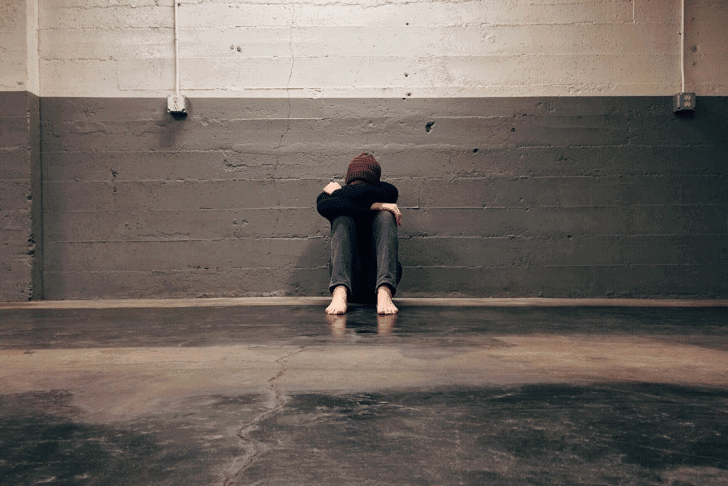Narcissistic abuse syndrome—also known as narcissistic victim syndrome—is a term used to describe the psychological and emotional trauma experienced by individuals who’ve been manipulated or abused by someone with narcissistic traits or narcissistic personality disorder (NPD).
It’s important to note, however, that not all individuals with narcissistic traits are abusive, and the two shouldn’t always be conflated.

What Is Narcissistic Victim Syndrome?
Narcissistic victim syndrome refers to the emotional toll of being in a relationship with someone who consistently exhibits narcissistic behavior. This abuse often results in anxiety, self-doubt, fear, confusion, and withdrawal from others. Victims may begin to question their own perception of reality due to manipulative tactics like gaslighting or chronic criticism, which can lead to long-term psychological distress and a fractured sense of identity.

Signs You May Be Experiencing Narcissistic Abuse
Recognizing narcissistic abuse can be difficult because it often develops gradually. However, consistent patterns of manipulation and emotional harm are key indicators.

Here are 12 common signs:
Idealization and Devaluation
Relationships with narcissists often begin with a “love bombing” phase—excessive flattery, attention, and gifts—meant to hook the victim emotionally. Once trust is gained, the affection fades and is replaced with criticism, neglect, or backhanded compliments.

Gaslighting
The narcissist denies facts or rewrites events to confuse the victim. Over time, the victim starts questioning their own memory and sanity, leading to chronic self-doubt.
Isolation
Abusers gradually cut victims off from friends and family to make them more dependent and easier to control. Victims are then vulnerable to tactics like “hoovering”—where the abuser pulls them back in when they try to leave.

Smear Campaigns
To maintain their reputation, narcissists may spread lies about the victim to others. This tactic isolates the victim further and discredits any attempts to expose the abuse.
Chronic Self-Doubt
Constant belittling and subtle insults erode the victim’s confidence. Even basic decision-making can feel overwhelming due to repeated messaging that they are incompetent or foolish.

Physical Symptoms
The emotional strain often triggers physical ailments like headaches, fatigue, insomnia, and gastrointestinal issues. Chronic stress responses can manifest in numerous ways across the body.
Emotional Instability
Victims are kept in a state of uncertainty, never knowing whether they’ll receive kindness or cruelty. This emotional rollercoaster results in a heightened sense of anxiety and fear of triggering a reaction.

Loss of Identity
Victims may reshape their entire personality to avoid conflict or gain approval. Over time, they lose touch with who they are, feeling empty and disconnected.
Difficulty Setting Boundaries
Narcissists often ignore or punish boundary-setting. As a result, victims struggle to stand up for themselves or prioritize their own needs in future relationships.

Anxiety and Depression
Constant abuse can lead to lasting feelings of hopelessness, exhaustion, and emotional numbness. Victims often lose interest in once-joyful activities and may withdraw socially.

The “Freeze” Response
In response to trauma, some victims enter a state of paralysis—feeling unable to act or leave the relationship. This is a survival response to prolonged emotional fear and helplessness.
Understanding Manipulative Tactics
Narcissists use gaslighting, triangulation (involving others to create drama or confusion), hoovering, the silent treatment, and scapegoating to control and destabilize their victims. Over time, this creates emotional dependency and erodes self-worth.

The Lasting Effects of Narcissistic Abuse
Even after the relationship ends, the emotional wounds can linger. Many survivors struggle with trust, low self-esteem, and difficulty forming healthy relationships. Feelings of isolation are common, especially when others don’t understand the subtle dynamics of emotional abuse.

Healing and Recovery
The path to recovery begins with recognition. Establishing boundaries, going no-contact, or using “grey rocking” (offering minimal emotional reaction) are essential first steps. Support from friends, family, or peer groups can make a huge difference. Therapies like CBT and EMDR are highly effective in processing trauma and rebuilding self-confidence.

In Conclusion
Narcissistic victim syndrome is a serious and painful experience—but healing is possible. By understanding the signs and seeking help, survivors can reclaim their lives and begin to rebuild their sense of self in healthier, more empowering ways.
